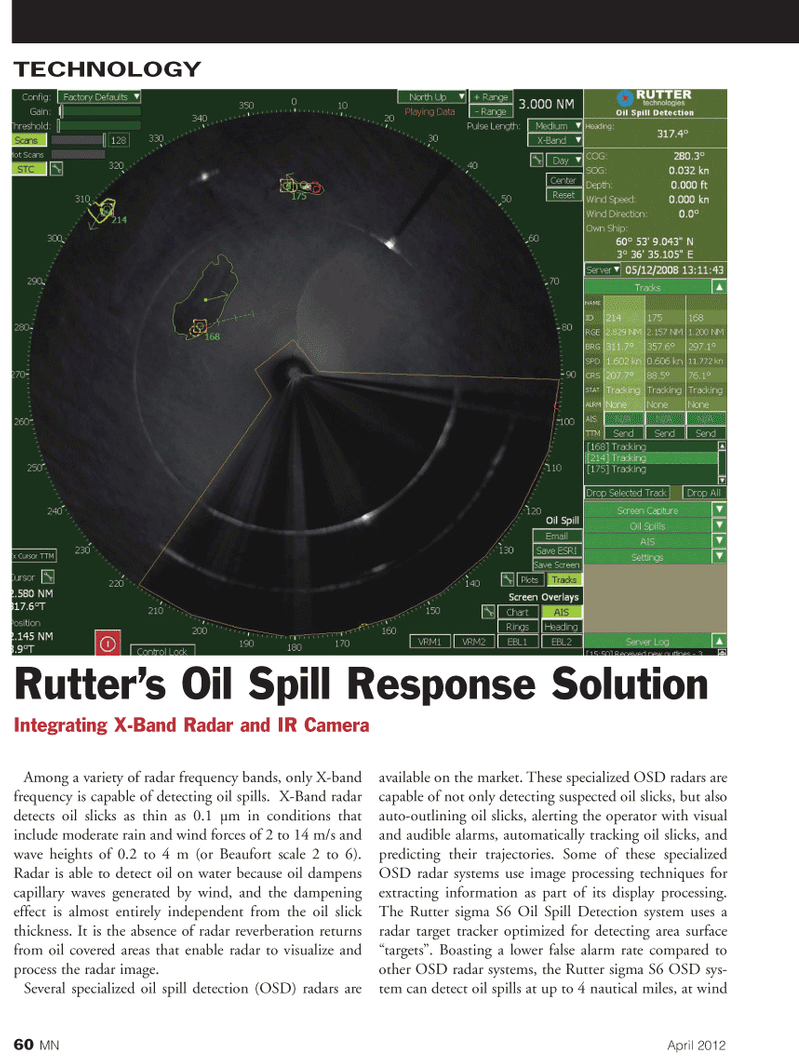
Page 60: of Marine News Magazine (April 2012)
Offshore Service Operators
Read this page in Pdf, Flash or Html5 edition of April 2012 Marine News Magazine
60MNApril 2012Among a variety of radar frequency bands, only X-band frequency is capable of detecting oil spills. X-Band radar detects oil slicks as thin as 0.1 µm in conditions thatinclude moderate rain and wind forces of 2 to 14 m/s and wave heights of 0.2 to 4 m (or Beaufort scale 2 to 6). Radar is able to detect oil on water because oil dampenscapillary waves generated by wind, and the dampening effect is almost entirely independent from the oil slick thickness. It is the absence of radar reverberation returns from oil covered areas that enable radar to visualize and process the radar image. Several specialized oil spill detection (OSD) radars are available on the market. These specialized OSD radars are capable of not only detecting suspected oil slicks, but alsoauto-outlining oil slicks, alerting the operator with visual and audible alarms, automatically tracking oil slicks, andpredicting their trajectories. Some of these specialized OSD radar systems use image processing techniques for extracting information as part of its display processing. The Rutter sigma S6 Oil Spill Detection system uses a radar target tracker optimized for detecting area surface targets?. Boasting a lower false alarm rate compared to other OSD radar systems, the Rutter sigma S6 OSD sys- tem can detect oil spills at up to 4 nautical miles, at windTECHNOLOGYRutters Oil Spill Response Solution Integrating X-Band Radar and IR Camera

 59
59

 61
61
